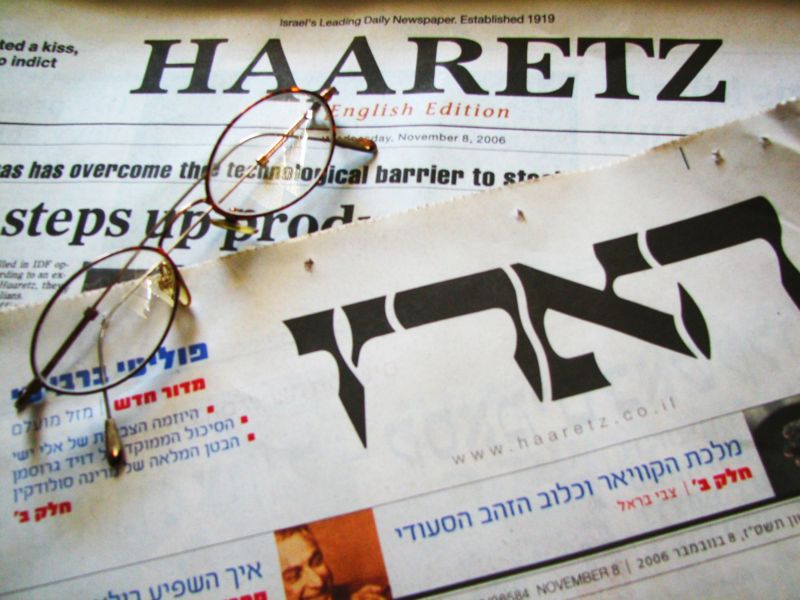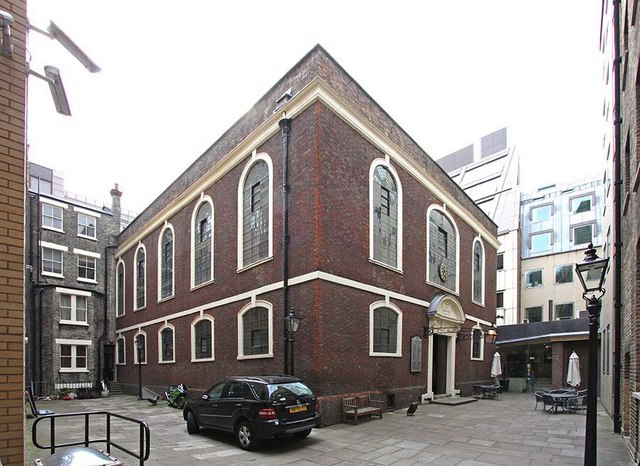|
Montefiore Synagogue
The Montefiore Synagogue is the private Orthodox Jewish synagogue and adjacent mausoleum of the late Sir Moses Montefiore, located on Honeysuckle Road, Hereson, in Ramsgate, Kent, England, in the United Kingdom. The private synagogue was completed in 1833 and, together with the mausoleum, was listed as a Grade II* building in 1968. The synagogue and mausoleum are cared for and maintained by the Montefiore Endowment, that also maintains the nearby Ramsgate Jewish Cemetery. History Sir Moses Montefiore first came to Ramsgate in 1812 on his honeymoon with his wife Judith Cohen, sister-in-law to Nathan Rothschild. Ramsgate had had a small Jewish community since 1786. The synagogue was in the European tradition of great men having private chapels on their estates. Sir Moses Montefiore had the synagogue built immediately upon purchasing East Cliff Lodge in 1831. On the day the building was dedicated, Montefiore fulfilled the Jewish custom of marking such an occasion by giving char ... [...More Info...] [...Related Items...] OR: [Wikipedia] [Google] [Baidu] |
Orthodox Judaism
Orthodox Judaism is a collective term for the traditionalist branches of contemporary Judaism. Theologically, it is chiefly defined by regarding the Torah, both Torah, Written and Oral Torah, Oral, as literally revelation, revealed by God in Judaism, God on Mount Sinai (Bible), Mount Sinai and faithfully transmitted ever since. Orthodox Judaism therefore advocates a strict observance of Jewish Law, or ''halakha'', which is to be Posek, interpreted and determined only according to traditional methods and in adherence to the continuum of received precedent through the ages. It regards the entire ''halakhic'' system as ultimately grounded in immutable revelation, essentially beyond external and historical influence. More than any theoretical issue, obeying the Kosher, dietary, Tumah and taharah, purity, ethical and other laws of ''halakha'' is the hallmark of Orthodoxy. Practicing members are easily distinguishable by their lifestyle, refraining from doing 39 Melakhot, numerous rou ... [...More Info...] [...Related Items...] OR: [Wikipedia] [Google] [Baidu] |
Church Of England
The Church of England (C of E) is the State religion#State churches, established List of Christian denominations, Christian church in England and the Crown Dependencies. It is the mother church of the Anglicanism, Anglican Christian tradition, tradition, with foundational doctrines being contained in the ''Thirty-nine Articles'' and ''The Books of Homilies''. The Church traces its history to the Christian hierarchy recorded as existing in the Roman Britain, Roman province of Britain by the 3rd century and to the 6th-century Gregorian mission to Kingdom of Kent, Kent led by Augustine of Canterbury. Its members are called ''Anglicans''. In 1534, the Church of England renounced the authority of the Papacy under the direction of Henry VIII, beginning the English Reformation. The guiding theologian that shaped Anglican doctrine was the Reformer Thomas Cranmer, who developed the Church of England's liturgical text, the ''Book of Common Prayer''. Papal authority was Second Statute of ... [...More Info...] [...Related Items...] OR: [Wikipedia] [Google] [Baidu] |
Torah Ark
A Torah ark (also known as the ''hekhal'', , or ''aron qodesh'', ) is an ornamental chamber in the synagogue that houses the Torah scrolls. History The ark is also known as the ''ark of law'', or in Hebrew the ''Aron Kodesh'' () or ''aron ha-Kodesh'' ('holy ark') in Ashkenazi communities and as the '' Hekhal'' ('sanctuary') among Sefardi communities. The name ''Aron Kodesh'' is a reference to the Ark of the Covenant, which was stored in the Holy of Holies in the inner sanctuaries of both the ancient Tabernacle and the Temple in Jerusalem. Similarly, ''Hekhál'' ( 'palace'; also written ''hechal'', ''echal'', ''heichal'' or ''Echal Kodesh''—mainly among Balkan Sephardim) was used in the same time period to refer to the inner sanctuary. The ''hekhal'' contained the Menorah, Altar of Incense and Table of the Showbread. Customs and location In some ancient synagogues, such as the fifth-century synagogue in Susya, the Torah scroll was not placed inside the synagogue at all, but ... [...More Info...] [...Related Items...] OR: [Wikipedia] [Google] [Baidu] |
Stucco
Stucco or render is a construction material made of aggregates, a binder, and water. Stucco is applied wet and hardens to a very dense solid. It is used as a decorative coating for walls and ceilings, exterior walls, and as a sculptural and artistic material in architecture. Stucco can be applied on construction materials such as metal, expanded metal lath, concrete, cinder block, or clay brick and adobe for decorative and structural purposes. In English, "stucco" sometimes refers to a coating for the outside of a building and " plaster" to a coating for interiors. As described below, however, the materials themselves often have little or no difference. Other European languages, notably Italian, do not have the same distinction: ''stucco'' means ''plaster'' in Italian and serves for both. Composition The basic composition of stucco is lime, water, and sand. The difference in nomenclature between stucco, plaster, and mortar is based more on use than composition. ... [...More Info...] [...Related Items...] OR: [Wikipedia] [Google] [Baidu] |
Haaretz
''Haaretz'' (; originally ''Ḥadshot Haaretz'' – , , ) is an List of newspapers in Israel, Israeli newspaper. It was founded in 1918, making it the longest running newspaper currently in print in Israel. The paper is published in Hebrew language, Hebrew and English language, English in the Berliner (format), Berliner format, and is also available online. In North America, it is published as a weekly newspaper, combining articles from the Friday edition with a roundup from the rest of the week. ''Haaretz'' is Israel's newspaper of record. It is known for its Left-wing politics, left-wing and Liberalism in Israel, liberal stances on domestic and foreign issues. ''Haaretz'' has the third-largest Print circulation, circulation in Israel. It is widely read by international observers, especially in its English edition, and discussed in the international press. According to the Center for Research Libraries, among Israel's daily newspapers, "''Haaretz'' is considered the most infl ... [...More Info...] [...Related Items...] OR: [Wikipedia] [Google] [Baidu] |
Tom Segev
Tom Segev (; born March 1, 1945) is an Israeli historian, author and journalist. He is associated with Israel's New Historians, a group critical of many of the country's traditional narratives. Biography Segev was born on March 1, 1945 in Jerusalem. His parents, Ricarda (née Meltzer) and Heinz Schwerin were artists who had met at the Bauhaus art school and fled Nazi Germany in 1935 due to their Communist orientation (Heinz was also Jewish). His mother was a photographer; his father, an architect and toy manufacturer, died on February 3, 1948, when falling from a building during the 1948 Arab–Israeli War. Segev's first language was German; his mother never learned Hebrew beyond a basic level. He earned a BA in history and political science from the Hebrew University of Jerusalem and a PhD in history from Boston University in the 1970s. Segev did his mandatory service in the IDF as a librarian at the National Security College in Jerusalem. Around that time, he Hebraized his ... [...More Info...] [...Related Items...] OR: [Wikipedia] [Google] [Baidu] |
Hillock
A hillock or knoll is a small hill,The Free Dictionary "hillock" entry, retrieved December 18, 2007 usually separated from a larger group of s such as a range. Hillocks are similar in their distribution and size to small mesas or s. This particular formation occurs often in and |
Bevis Marks Synagogue
Bevis Marks Synagogue, officially Qahal Kadosh Sha'ar ha-Shamayim (), is an Orthodox Judaism, Orthodox Judaism, Jewish congregation and synagogue, located off Bevis Marks, Aldgate, in the City of London, England, in the United Kingdom. The congregation is affiliated to London's historic Spanish and Portuguese Jews, Spanish and Portuguese Jewish community and worships in the Nusach Sefard, Sephardic Nusach (Jewish custom), rite. Built in 1701, the Grade I listed building is the Oldest synagogues in the United Kingdom, oldest synagogue in the United Kingdom in continuous use. It is the only synagogue building in Europe that has continuously held regular services for more than 320 years. History Construction The origins of the community date from an influx to London of Crypto-Judaism, crypto-Jews, or so called Marranos, from Spain and Portugal, mostly via the growing Sephardi Jews, Sephardi Jewish community in Amsterdam, in the early seventeenth century. These Jews began practisi ... [...More Info...] [...Related Items...] OR: [Wikipedia] [Google] [Baidu] |
Nusach (Jewish Custom)
In Judaism, Nusach (, , plural ''nusaḥim'', ) is the exact text of a prayer service; sometimes the English word "rite" is used to refer to the same thing. Nusakh means "formulate" or "wording." Texts used by different communities include Baladi-rite prayer, nusach Ashkenaz, nusach Sefard, nusach edot haMizraḥ, Italian Nusach and the nusach Ari. A textual nusach is distinct from a musical one; the latter refers to a community's musical style or tradition, particularly the chant used for recitative prayers such as the Amidah. Meanings ''Nusach'' primarily means "text" or "version", the correct wording of a religious text or liturgy. Thus, the ''nusach tefillah'' is the text of the prayers, either generally or in a particular community. In common use, ''nusach'' has come to signify the entire liturgical tradition of the community, including the musical rendition. It is one example of '' minhag'', which includes traditions on Jewish customs of all types. Varieties Nus ... [...More Info...] [...Related Items...] OR: [Wikipedia] [Google] [Baidu] |
Nusach Sefard
Nusach Sefard, Nusach Sepharad, or Nusach Sfard, is the name for various forms of the Jewish '' siddurim'' designed to reconcile Ashkenazi customs with the kabbalistic customs of Isaac Luria (more commonly known as the Arizal). To this end, it has incorporated the wording of Nusach Edot ha-Mizrach or Nusach Hasfaradim, the prayer book of Sephardi Jews, into certain prayers. Nusach Sefard is used nearly universally by Hasidim, as well as by some other Ashkenazi Jews (especially Dati leumi Jews), but has not gained significant acceptance by Sephardi Jews. Some Hasidic dynasties use their own version of the Nusach Sefard ''siddur'', sometimes with a notable divergence between different versions. Prayers and customs Some versions are nearly identical to Nusach Ashkenaz, while others come far closer to Nusach Hasfaradim or Nusach Edot ha-Mizrach: most versions fall somewhere in between. All versions attempt to incorporate the customs of the Arizal, with greater or lesser success ... [...More Info...] [...Related Items...] OR: [Wikipedia] [Google] [Baidu] |
General Practitioner
A general practitioner (GP) is a doctor who is a Consultant (medicine), consultant in general practice. GPs have distinct expertise and experience in providing whole person medical care, whilst managing the complexity, uncertainty and risk associated with the continuous care they provide. GPs work at the heart of their communities, striving to provide comprehensive and equitable care for everyone, taking into account their health care needs, stage of life and background. GPs work in, connect with and lead multidisciplinary teams that care for people and their families, respecting the context in which they live, aiming to ensure all of their physical health and mental health needs are met. They are trained to treat patients to levels of complexity that vary between countries. The term "primary care physician" is used in the United States. A core element in general practice is continuity of care, that bridges episodes of various illnesses over time. Greater continuity with a gen ... [...More Info...] [...Related Items...] OR: [Wikipedia] [Google] [Baidu] |
Grade II Listed Building
In the United Kingdom, a listed building is a structure of particular architectural or historic interest deserving of special protection. Such buildings are placed on one of the four statutory lists maintained by Historic England in England, Historic Environment Scotland in Scotland, in Wales, and the Historic Environment Division of the Department for Communities in Northern Ireland. The classification schemes differ between England and Wales, Scotland, and Northern Ireland (see sections below). The term has also been used in the Republic of Ireland, where buildings are protected under the Planning and Development Act 2000, although the statutory term in Ireland is " protected structure". A listed building may not be demolished, extended, or altered without permission from the local planning authority, which typically consults the relevant central government agency. In England and Wales, a national amenity society must be notified of any work to be done on a listed building ... [...More Info...] [...Related Items...] OR: [Wikipedia] [Google] [Baidu] |







